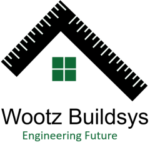In the ever-evolving world of construction and structural engineering, efficiency, sustainability, and strength are key pillars that shape modern buildings. Among the innovative structural systems making waves today is the hybrid steel structure. Combining the advantages of different construction materials—primarily steel with concrete, timber, or other composites—hybrid steel structures are setting a new benchmark for architectural flexibility, performance, and design efficiency.
In this article, we’ll explore what a hybrid steel structure is, how it functions, where it’s used, and why it’s becoming increasingly popular across residential, commercial, and industrial projects in India and around the world.
What Is a Hybrid Steel Structure?
A hybrid steel structure is a structural system that integrates steel with other materials—such as concrete, timber, or composite panels—to optimize the performance, cost, and sustainability of a building. Instead of relying solely on one material for the structural framework, hybrid systems strategically combine materials to capitalize on their individual strengths.
For example:
- Steel beams may be paired with concrete cores or slabs for enhanced rigidity and load distribution.
- Structural steel frames might support cross-laminated timber (CLT) floors or walls to add warmth and sustainability.
- Lightweight steel could be used with modular prefabricated panels for rapid construction.
This hybrid approach makes it possible to tailor structural solutions based on the specific functional, architectural, and environmental needs of a project.
How Does a Hybrid Steel Structure Work?
At its core, a hybrid steel structure works by distributing structural loads across different materials, each performing optimally in its intended role.
Here’s a basic breakdown of how these systems function:
1. Steel as the Primary Frame
Steel serves as the backbone of the hybrid structure due to its:
- High strength-to-weight ratio
- Speed of erection
- Dimensional precision
- Long spans with minimal supports
The steel frame typically handles vertical and lateral loads, including gravity, wind, and seismic forces.
2. Secondary Materials for Load Sharing
Materials like concrete or timber are introduced to:
- Improve thermal and acoustic insulation
- Add mass and stiffness to the structure (important for high-rise stability)
- Enhance fire resistance and energy efficiency
- Provide aesthetics and natural finishes (especially with timber)
These materials may form floors, walls, slabs, or infill panels, working in tandem with the steel frame to create a composite action.
3. Composite Action
When materials such as steel and concrete are bonded together effectively (e.g., through shear connectors), they act as a single unit to resist forces. This is called composite construction, and it’s a key principle in hybrid steel structures. It significantly increases strength while reducing material use and cost.
Key Benefits of Hybrid Steel Structures
At Wootz, we advocate for future-ready construction technologies, and hybrid steel structures align perfectly with that mission. Here’s why they’re gaining traction:
1. Faster Construction
Steel fabrication can occur off-site while the foundation is being prepared, speeding up project timelines. Materials like precast concrete or modular timber panels can be installed rapidly alongside the steel frame, minimizing on-site labor and delays.
2. Design Flexibility
Hybrid structures allow architects and engineers to push boundaries. Whether it’s large open spans in commercial buildings or organic shapes in residential architecture, this system accommodates creativity without compromising on stability.
3. Cost Efficiency
Although steel can be more expensive per unit than concrete, combining it with other materials optimizes usage. Hybrid systems can lead to:
- Smaller foundations (due to lighter weight)
- Less material waste
- Lower transportation and labor costs
4. Sustainability
Hybrid structures can integrate renewable materials like timber and utilize recycled steel. The modular and prefabricated nature of these systems also means less on-site waste, reduced carbon footprint, and greater energy efficiency in the long term.
5. Earthquake Resistance
Due to their ductility and energy dissipation capacity, steel structures excel in seismic zones. Combining them with materials like concrete or CLT can further enhance resilience through base isolation systems or damping technologies.
Common Applications of Hybrid Steel Structures
Hybrid steel structures are used across diverse sectors, thanks to their versatility:
Commercial Buildings
Shopping malls, offices, and mixed-use developments benefit from open spans and rapid construction.
High-Rise Towers
Concrete cores provide stiffness while steel frames allow vertical speed and architectural elegance.
Industrial Facilities
Prefabricated hybrid systems are ideal for warehouses and manufacturing units that demand durability and efficiency.
Institutional Projects
Schools, hospitals, and government buildings use hybrid structures to meet strict safety, energy, and performance codes.
Residential Housing
Hybrid steel + timber homes are becoming popular for their aesthetic warmth, energy efficiency, and quick build time.
Challenges of Hybrid Steel Structures
While the benefits are clear, adopting hybrid steel structures requires careful planning:
- Complex Design Coordination: Integrating multiple materials demands precise engineering and collaboration between disciplines.
- Fireproofing Requirements: Steel components often require additional fire protection coatings.
- Skilled Labor: While off-site prefabrication reduces some labor needs, on-site assembly still requires trained personnel.
That said, with the right partners and planning, these challenges are entirely manageable—especially with platforms like Wootz, which connect developers with innovative construction solutions and expert teams.
Hybrid Steel Structures in India: The Future of Construction
India’s construction landscape is rapidly evolving. With rising urbanization, tighter project deadlines, and a greater push for sustainability, hybrid construction methods are no longer an option—they’re a necessity.
Hybrid steel structures are particularly well-suited to India’s climate and building needs:
- Flood- and seismic-resistant designs for vulnerable regions
- Quick deployment for government housing or infrastructure
- Thermal and acoustic performance for urban commercial buildings
Wootz is committed to empowering developers, architects, and builders across India with cutting-edge building systems. Our focus on hybrid structural technology is not just about innovation—it’s about delivering lasting value, safety, and quality to every project.
Final Thoughts
The hybrid steel structure represents a leap forward in building design. By strategically combining steel with other high-performance materials, it delivers unmatched benefits in terms of speed, strength, and sustainability.
As India moves toward smarter, greener construction, now is the time to explore how hybrid systems can elevate your next project. Whether you’re a real estate developer, an architect, or a construction firm, embracing hybrid steel structures could be the competitive edge you need.
Ready to build the future?
Explore modern structural solutions with Wootz — your partner in innovation and precision engineering.
Frequently Asked Questions (FAQ’s )
1. What is a hybrid steel structure?
A hybrid steel structure combines steel with other materials like concrete, timber, or composites to optimize performance, speed, and cost in building construction.
2. What are the main benefits of hybrid steel structures?
Key benefits include faster construction, cost efficiency, design flexibility, sustainability, and improved seismic resistance.
3. How do hybrid steel structures work?
They work by distributing structural loads across steel and complementary materials, allowing each to perform optimally—for example, using steel for framing and concrete for stiffness or mass.
4. Where are hybrid steel structures commonly used?
They are used in commercial buildings, high-rises, warehouses, schools, hospitals, and residential projects, especially where fast and durable construction is required.
5. Are hybrid steel structures more sustainable than traditional methods?
Yes, hybrid systems often use less material, generate less waste, and can incorporate renewable resources like timber and recycled steel.



